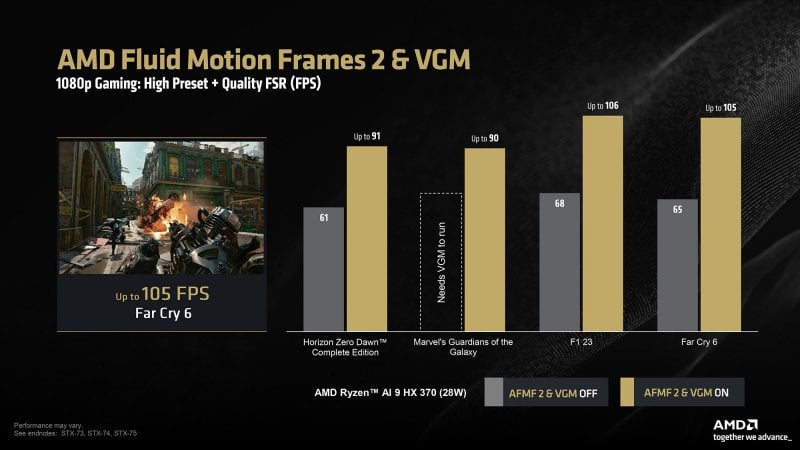Many laptops and portable consoles share the same memory between their CPU and GPU. Now, AMD offers an innovative solution to optimize the graphics performance of its APUs: the new feature Variable Graphics Memory (VGM). With VGM, you can convert up to 75% of your system RAM to dedicated video memory with the push of a button in the AMD Adrenalin app.
This feature is currently only available on AMD AI 300 “Strix Point” laptops, and the amount of RAM that can be converted depends on the total RAM in your system. For example, a 32GB laptop with 512MB of dedicated video memory can be converted into a 24GB laptop with 8GB of dedicated VRAM.
The effectiveness of this additional video memory varies by game. Some titles, like Alan Wake II, require at least 6GB of VRAM and will generate errors if you don’t have enough. However, initial testing has shown that enabling VGM doesn’t provide a significant improvement in all games, so we’ll have to wait a while for more consistent results.
In addition to VGM, AMD is also introducing the previously announced Fluid Motion Frames 2 (AFMF 2) to Strix Point laptops, a technology that increases frame rates by generating new frames, now with less jitter and lag. By combining AFMF 2 with VGM and AMD’s FSR upscaling technology, you can achieve substantial increases in frame rates, provided you have at least 50 FPS before applying the frame generation technique.
Finally, we also remind you that AMD has announced the RX 7800M, a new laptop GPU with a TDP of up to 180W and 12GB of dedicated video memory. This graphics card fills an important gap in AMD’s lineup, positioning itself between the high-end RX 7900M and the RX 7600M XT.
What do you think of all these new features from AMD? Will they make laptops even more capable for gaming? Let us know in the comments below.
#AMD #Powers #Strix #Point #Laptops #VRAM #FPS #Variable #Graphics #Memory #AFMF

